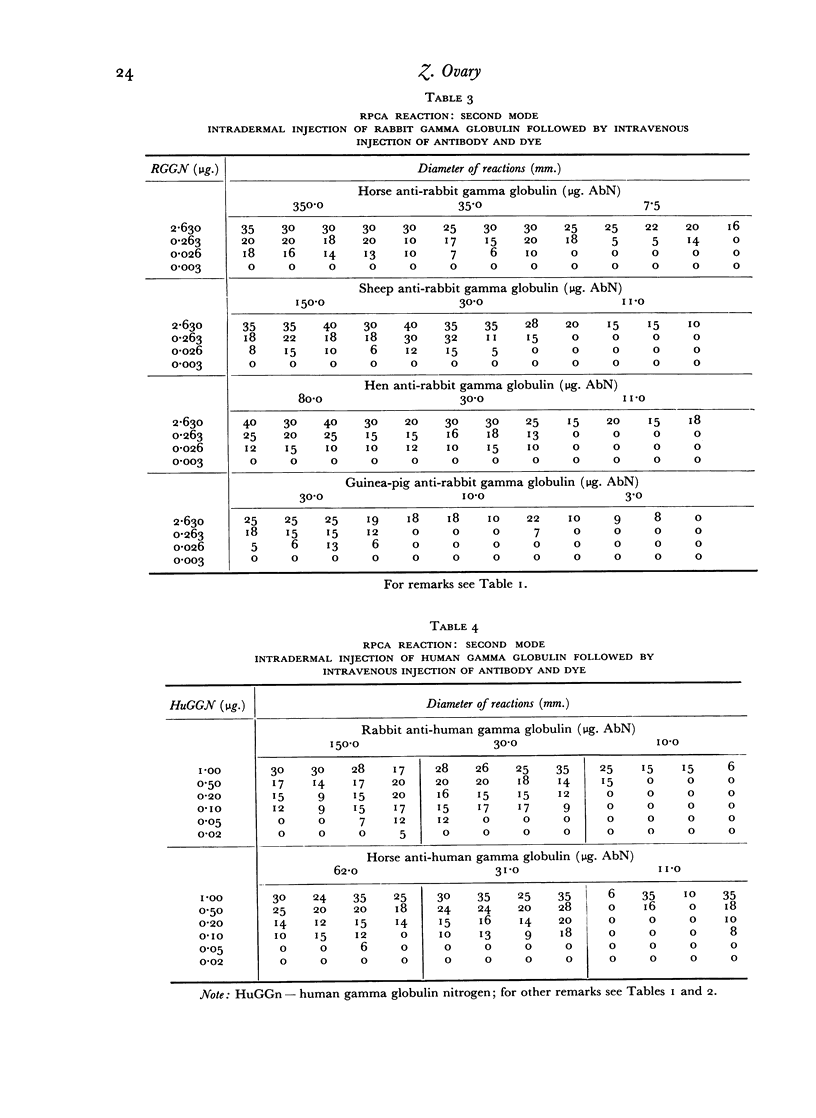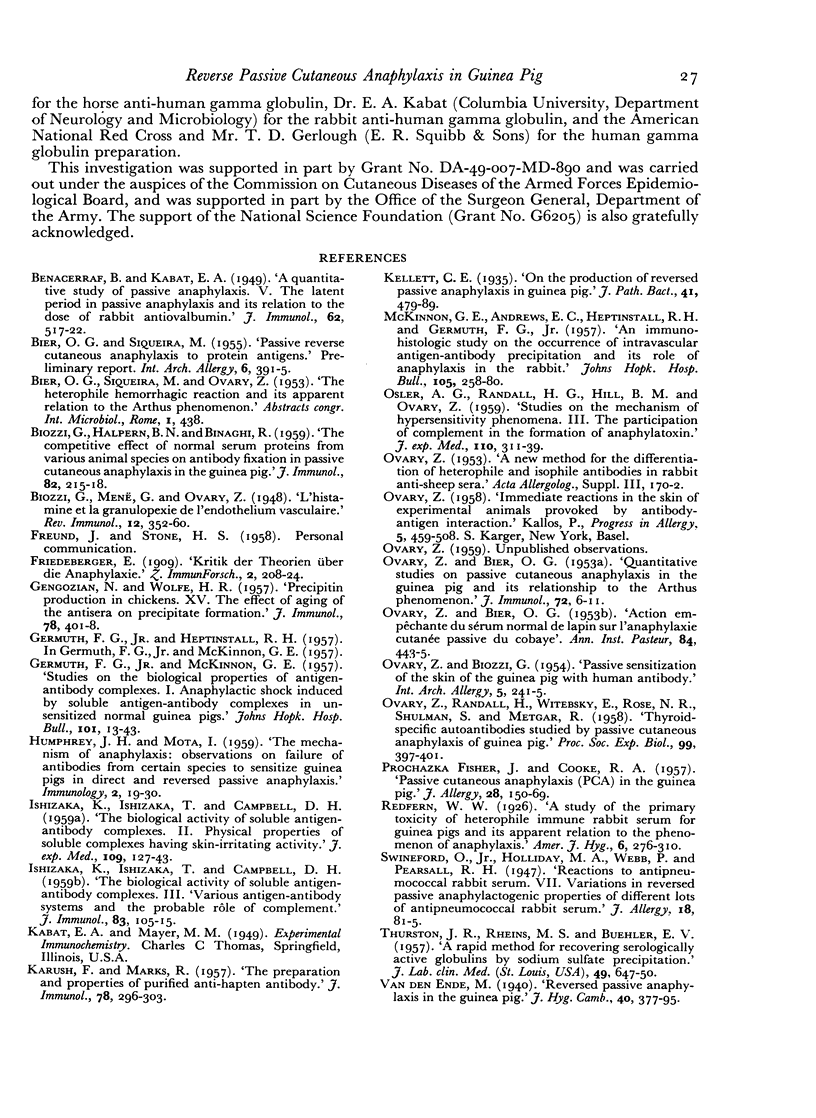Abstract
Reverse passive cutaneous anaphylaxis experiments were performed in guinea pigs with rabbit gamma globulin and human gamma globulin as antigens and horse, sheep or hen sera containing antibodies against these antigens. These antibodies were unable to directly sensitize the guinea-pig skin but when the reverse technique was used, namely, the antigen (gamma globulin) was injected before the antibody, characteristic anaphylactic reactions were obtained. It is concluded that, if a suitable antigen is used, which can be fixed to the host by the reverse technique, sera from species which cannot directly sensitize the guinea pig can nevertheless give typical anaphylactic reactions.
Full text
PDF








Selected References
These references are in PubMed. This may not be the complete list of references from this article.
- BIER O. G., SIQUEIRA M. Passive reversed cutaneous anaphylaxis to protein antigens; preliminary report. Int Arch Allergy Appl Immunol. 1955;6(4-6):391–395. doi: 10.1159/000228196. [DOI] [PubMed] [Google Scholar]
- BIOZZI G., HALPERN B. N., BINAGHI R. The competitive effect of normal serum proteins from various animal species on antibody fixation in passive cutaneous anaphylaxis in the guinea pig. J Immunol. 1959 Mar;82(3):215–218. [PubMed] [Google Scholar]
- FISHER J. P., COOKE R. A. Passive cutaneous anaphylaxis (PCA) in the guinea pig; an immunologic and pathologic study. J Allergy. 1957 Mar;28(2):150–169. doi: 10.1016/0021-8707(57)90021-7. [DOI] [PubMed] [Google Scholar]
- HUMPHREY J. H., MOTA I. The mechanism of anaphylaxis: observations on the failure of antibodies from certain species to sensitize guinea pigs in direct and reversed passive anaphylaxis. Immunology. 1959 Jan;2(1):19–30. [PMC free article] [PubMed] [Google Scholar]
- KARUSH F., MARKS R. The preparation and properties of purified anti-hapten antibody. J Immunol. 1957 Apr;78(4):296–303. [PubMed] [Google Scholar]
- McKINNON G. E., ANDREWS E. C., Jr, HEPTINSTALL R. H., GERMUTH F. G., Jr An immunohistologic study on the occurrence of intravascular antigen-antibody precipitation and its role in anaphylaxis in the rabbit. Bull Johns Hopkins Hosp. 1957 Nov;101(5):258–280. [PubMed] [Google Scholar]
- OSLER A. G., RANDALL H. G., HILL B. M., OVARY Z. Studies on the mechanism of hypersensitivity phenomena. III. The participation of complement in the formation of anaphylatoxin. J Exp Med. 1959 Aug 1;110(2):311–339. doi: 10.1084/jem.110.2.311. [DOI] [PMC free article] [PubMed] [Google Scholar]
- OVARY Z., BIER O. G. Action empêchante du sérum normal de lapin sur l'anaphylaxie cutanée passive du cobaye. Ann Inst Pasteur (Paris) 1953 Feb;84(2):443–445. [PubMed] [Google Scholar]
- OVARY Z., RANDALL H., WITEBSKY E., METZGAR R., ROSE N. R., SHULMAN S. Thyroid-specific autoantibodies studied by passive cutaneous anaphylaxis of guinea pig. Proc Soc Exp Biol Med. 1958 Nov;99(2):397–401. doi: 10.3181/00379727-99-24363. [DOI] [PubMed] [Google Scholar]


